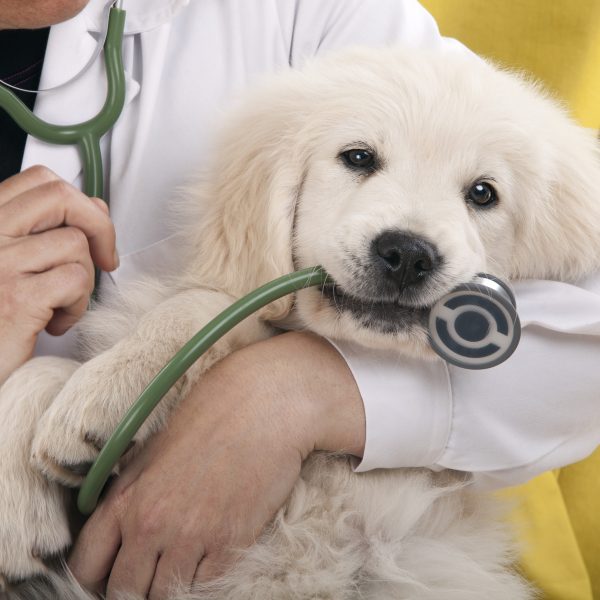What to Know About Pica in Dogs
 Dogs can exhibit some odd behavior at times. Sometimes your dog is just being a goofball and sometimes it can be an underlying medical issue. Pica is something every dog owner should be aware of. Here’s what to know about pica in dogs:
Dogs can exhibit some odd behavior at times. Sometimes your dog is just being a goofball and sometimes it can be an underlying medical issue. Pica is something every dog owner should be aware of. Here’s what to know about pica in dogs:
What is Pica?
Pica is a compulsive behavior problem and a medical issue that refers to the craving and eating non-food items. It occurs in humans as a psychological disorder and also occurs in other species, including dogs. Dogs eat weird things sometimes. Once or twice could be considered a mistake or a singular instance. More than that could be a sign of pica. It tends to be more common in females, but can occur in any dog.
Although it may sound like a goofy behavior issue, pica can cause serious health problems. A compulsion to eat non-food items can cause your dog to eat toxic items or items that will severely damage your dog’s internal organs. Common items ingested can be rocks, glass, hair, dirt, paper, drywall, metal, mulch, chalk, cloth, and more. It can also include feces, which is called coprophagy. Eating their puppies’ feces is a natural behavior for a nursing dog. However, if your dog is an adult and is not nursing, it could be a sign of pica. It’s important to take your dog to the vet if you notice your dog is eating non-food items.
What are the Symptoms of Pica in Dogs?
One of the biggest symptoms of pica in dogs is eating non-food items. If you observe your dog doing this, then it’s a good idea to get them to the vet and let them know you suspect pica. You may not see much evidence of your dog actually ingesting non-food items, but you might see the consequences.
If your dog is experiencing vomiting, diarrhea, chronic bad breath, or consistently loose stool, you will want to take your dog to the vet. They might just be sick or have dental issues, but these are also signs of ingesting a potentially toxic non-food item. Pica can also cause blockages in your dog’s digestive tract, which can result in constipation, dark stools, excessive drooling, burping, and stomach contractions. These could be symptoms of something else, but you’ll still want to take your dog to the vet for an examination and treatment.
What Causes Pica in Dogs?
Pica shows itself as a behavior problem in dogs, but the causes of it vary. It can be caused by a behavioral disorder like anxiety, stress, or depression. Pica can also be a reaction due to lack of attention, boredom, frustration, or lack of socialization. Other medical conditions can cause an increased appetite that results in pica. Malnutrition, an unbalanced diet, hookworms, or other intestinal parasites are the most common causes in this category.
However, more serious medical issues can also result in pica. These include conditions like anemia, diabetes, hyperthyroidism, stomach tumors, and inflammatory bowel disease (IBD). Pica can also be the result of increased appetite caused by prescribed medications for your dog. Corticosteroids and anti-seizure medications are the most common culprits in this case.
How is Pica Diagnosed in Dogs?
The first step towards a pica diagnosis is a visit to the vet. Any information you can provide about your dog’s diet, appetite and thirst levels, bowel movements, general behavior, and activity level will help your vet as they review your dog’s medical history. This will include a physical exam and may also include blood work, x-rays, urine tests, and other tests to help rule out other diseases.
What About Pica Treatment and Recovery?
When your dog has been diagnosed with pica, it will be necessary to get it treated. Treatment plans vary depending on whether your dog’s pica is a behavior or due to a medical condition. If it is a behavioral issue, your vet may recommend more attention, more physical activity, techniques and training to help correct the behavior, and more. If it is due to underlying medical condition, there will be a treatment plan for that specific medical condition and likely a new dietary plan as well. If there is a blockage, your dog will need surgery.
Recovery will vary along with the treatment plan. Regardless of the treatment, follow-up visits to the vet will be a part of recovery, especially if your dog had to have surgery. Behavior issues will take some time to correct. With time, effort, and sometimes help from a professional dog trainer or behaviorist, your dog can recover successfully.
Pica can be dangerous to your dog and is often a symptom of a more serious underlying issue. The best thing you can do if you suspect your dog has pica is to take note of everything and take them to the vet as soon as possible. Then, follow the treatment plan your vet provides to help your dog overcome it.
